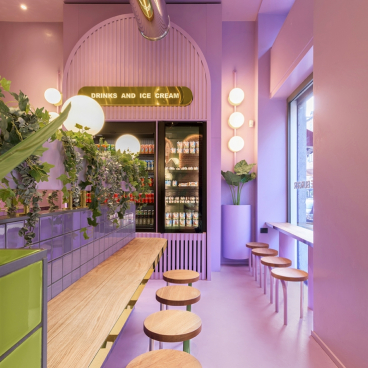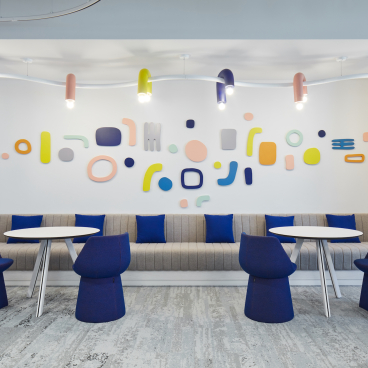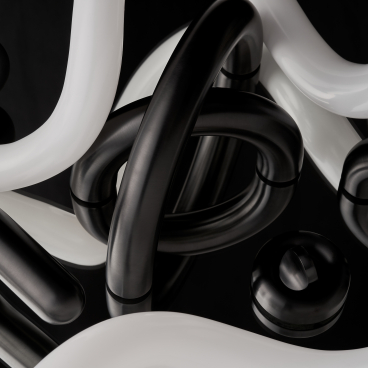Manchester Jewish Museum extension juxtaposes industrial corten steel with delicate detailing.
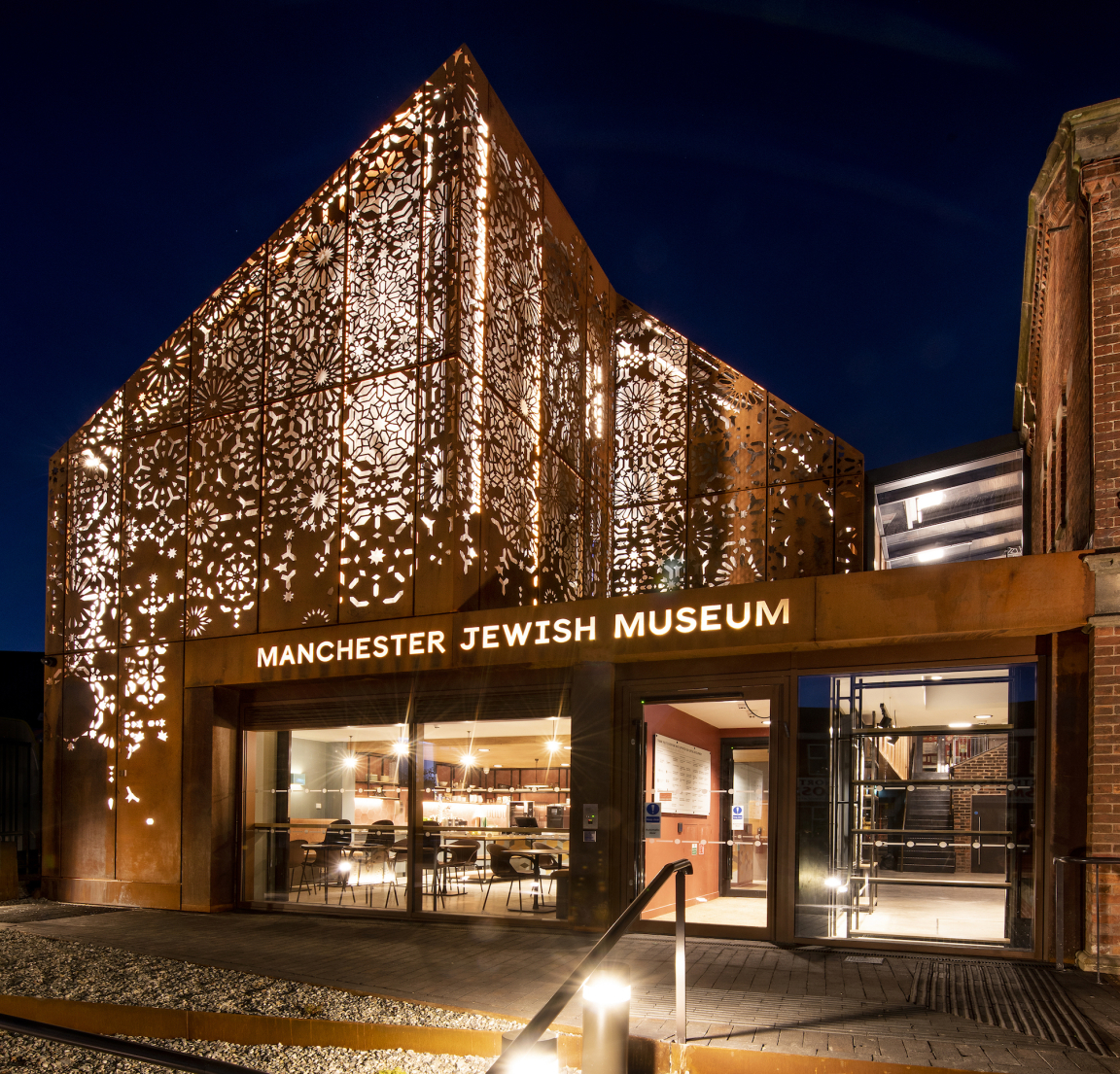
Joel Chester Fildes
After almost a decade of planning and two years of closure, Manchester Jewish Museum has re-opened its doors.
The new museum – situated in one of the city’s most multicultural areas of Cheetham Hill - explores universal experiences of journeys, communities and identities from the perspective of Manchester’s Jewish history. Its Grade II* listed synagogue building has been fully renovated and restored to serve both as a living artefact of an authentic Spanish and Portuguese synagogue and as a stunning cultural space in which the museum will programme live events throughout the year.
The major £6 million capital redevelopment, supported by The National Lottery Heritage Fund, was led by Katy Marks and her team at leading architect firm Citizens Design Bureau (CDB) and a myriad of contractors, specialists and fitters who have worked tirelessly over the past two years and under difficult conditions, due to the ongoing pandemic, to create a hugely significant new museum and cultural offer in Manchester. A major new extension has been built by construction contractors H.H. Smith & Sons to sit alongside the synagogue, doubling the size of the museum, to include a brand-new gallery, vegetarian kosher-style café, shop and collection store. A generous atrium also links new visitor facilities to the old building where there is now lift access to the first floor and the new exhibition gallery.
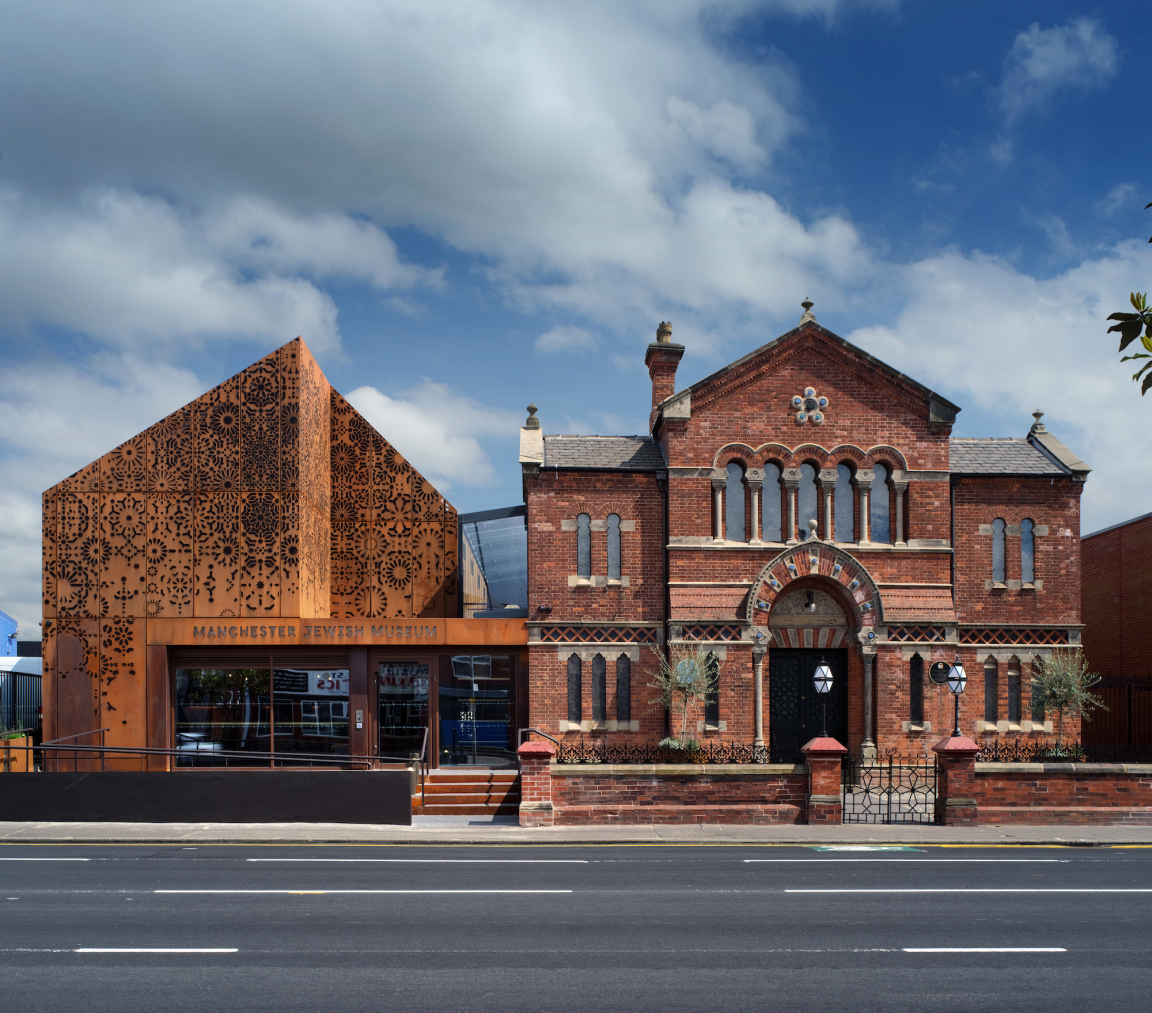
Philip Vile
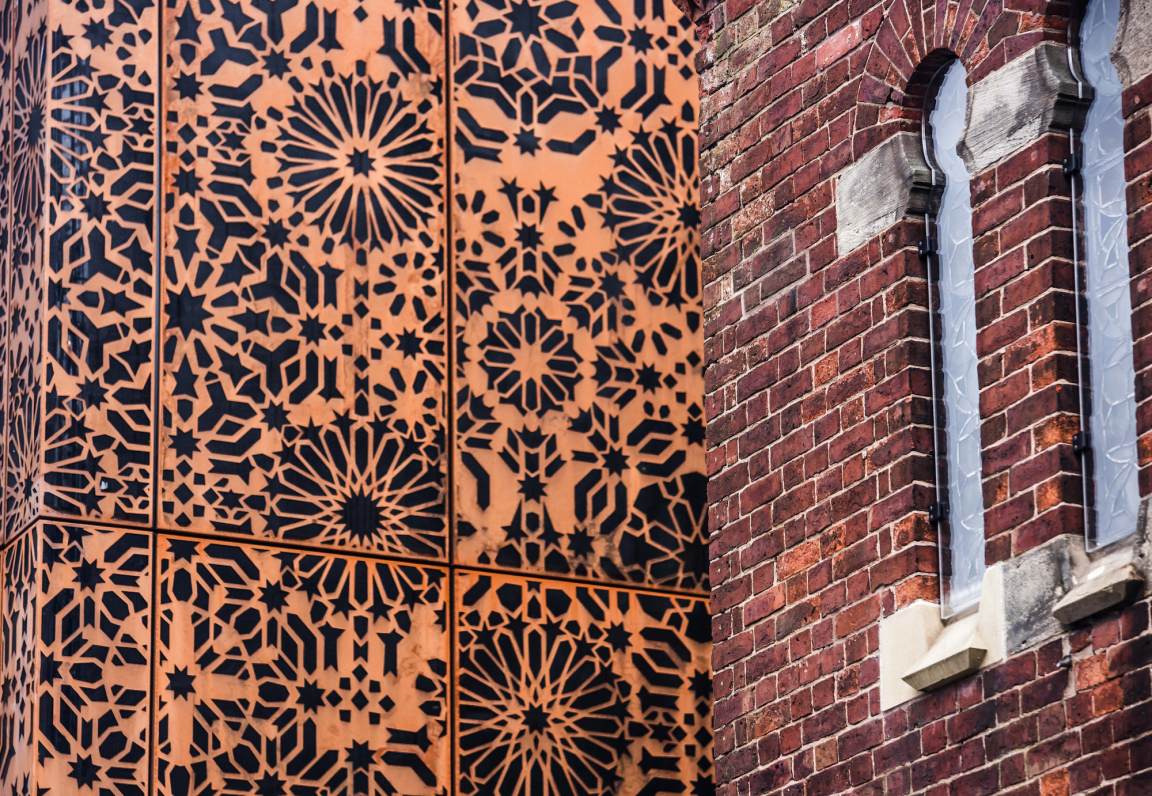
Joel Chester Fildes
Situated on an out-of-town trunk road, surrounded by industrial buildings, this area was once the hub of the textile trading industry that so many early Jewish immigrants were engaged in - an unlikely location for a museum. The challenge therefore for Katy Marks and her team at CDB was to create a building that would be more than a museum – one that would instead welcome and become embedded within the local area, reaching beyond the Jewish community.
With food playing such a unifying force between cultures it became the starting point for the architect and her team, launching a collaborative design process which included baking workshops, “syna-gigs” and events to reach out to and engage the local community and discover what it was that they wanted from their local museum. This redefined the museum brief to include flexible spaces to host events, community meals and functions, making links with local faith groups, schools and more.
The engagement ‘scratch’ process, funded by Arts Council England as a project in itself with Battersea Arts Centre, significantly shifted the brief to create a holistic museum experience so that every part of the building is densely woven with meaning and learning opportunities. Their unique design approach has been a "labour of love", including an immersive design process that has genuinely brought communities together. Those threads weave through every aspect of the new building – all on an extremely tight budget (construction cost £3.6m) further constrained by the unprecedented impact of the recent global pandemic.
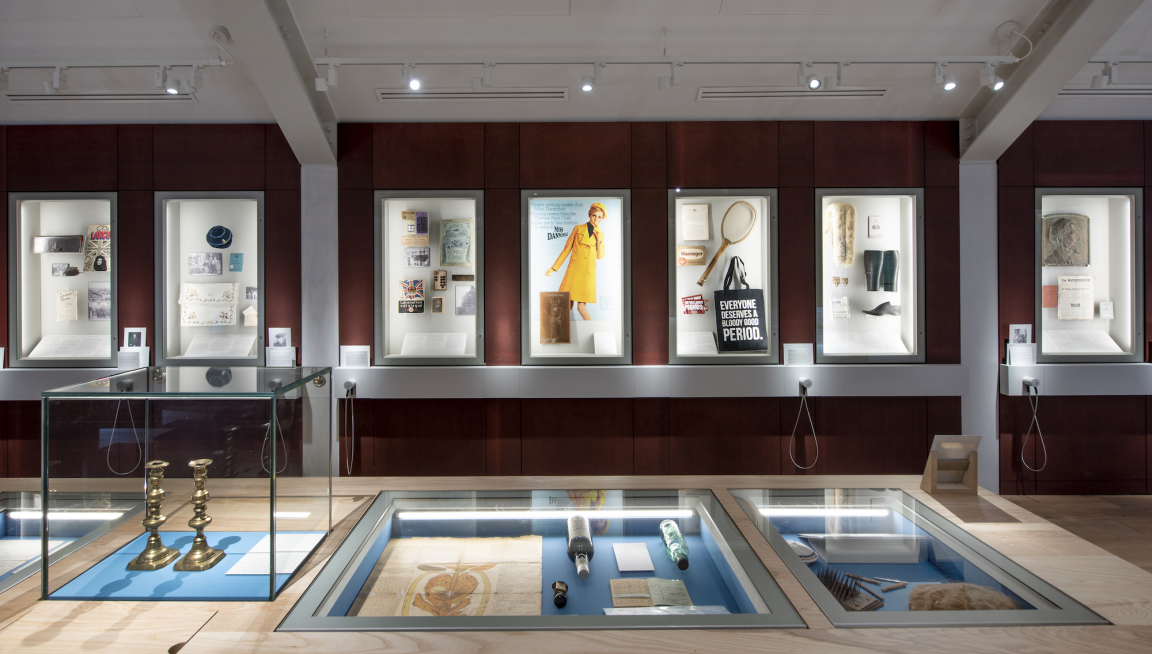
Joel Chester Fildes
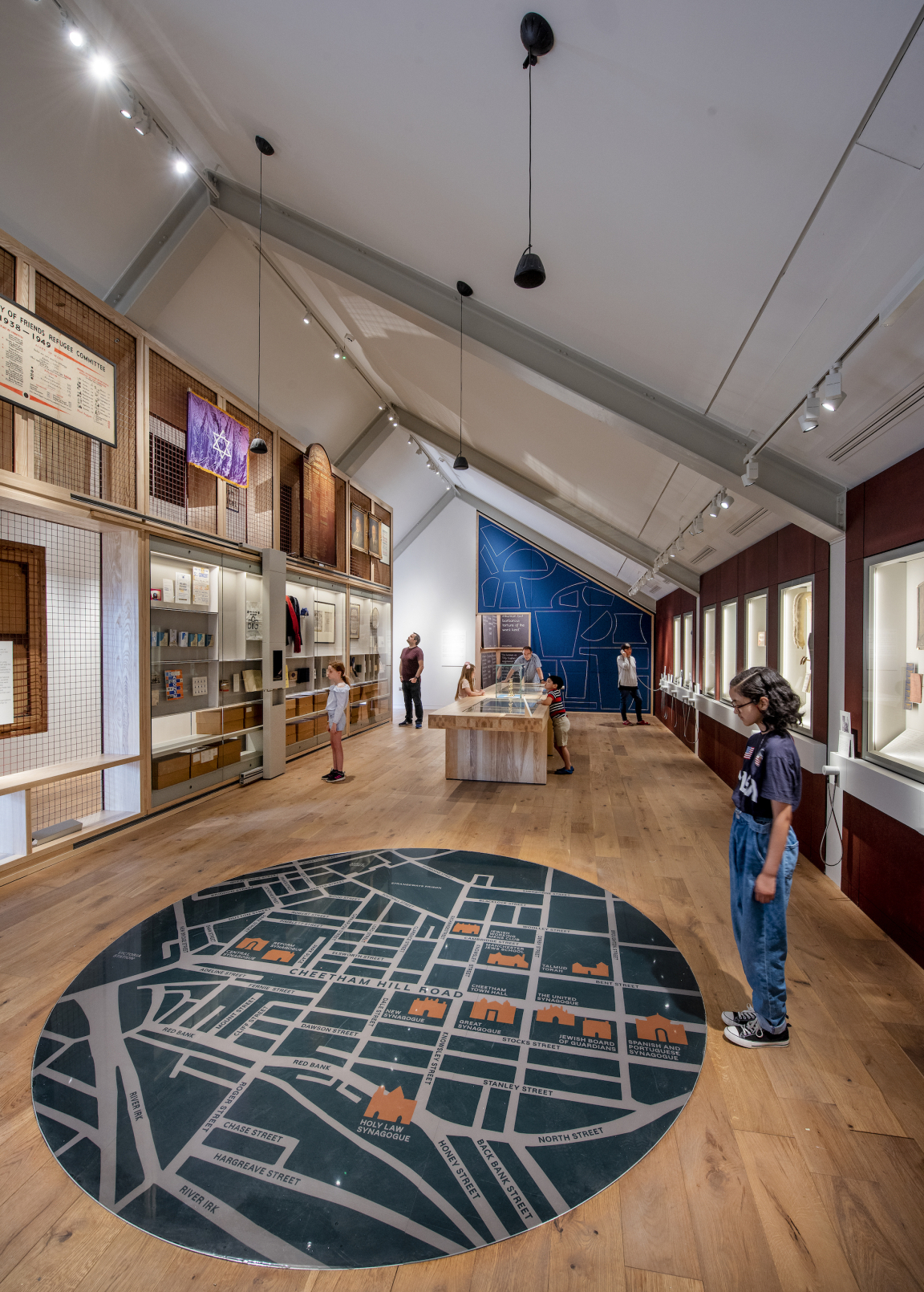
Joel Chester Fildes
Internally, the new gallery has been designed to take visitors on a journey through Manchester’s Jewish history and the journeys that brought Jewish people to the city, right through to the city’s present day communities. Designed in collaboration with All Things Studio and fitted by museum installation specialists, The Hub, the gallery provides the museum for the first time with a dedicated space to showcase an extensive part of its collection of over 31,000 items. New design features of the gallery include a floor map of Cheetham Hill, moveable digital labels and a collection of oral histories placed throughout the gallery, telling the stories of Jewish Mancunians. The interpretation panels, designed by Kellenberger-White, are made from recycled materials as part of the museum’s commitment to sustainability. The new museum is now also fully accessible with lift access and hearing induction loops throughout the new extension and adjacent building.
The former synagogue - built in 1874 and the oldest surviving synagogue in Manchester - has now been extensively repaired. Its original 19th Century decorative scheme has been reinstated following historic paint experts Britain & Co’s forensic paint analysis of over a century of accumulated layers of brown gloss and magnolia paint. Previously, the synagogue was thermally leaky and expensive to run. Now however, in spite of adding a new extension, and working very closely with structural and services engineering experts at Buro Happold, the project has been designed so that the overall energy use of the building and resultant carbon intensity will reduce by around 20% compared to the original building.
A high performance insulation quilt has been introduced into the old roof and a thermally massive double floor slab incorporating a fresh air plenum within the new extension pre-heats air to naturally ventilate the Listed Building. The old Victorian sunburners in the ceiling have been repurposed as natural ventilation extracts. The main atrium and community spaces have automatically controlled natural ventilation. Most significant in embodied energy terms is the retention and re-use of the synagogue. As a Listed Building, demolition was never an option, but its most likely future was a slow decline to dereliction and misuse. The embodied carbon impact of the project is some 250 tonnes of carbon dioxide equivalent less than if the museum had been rebuilt in its entirety.
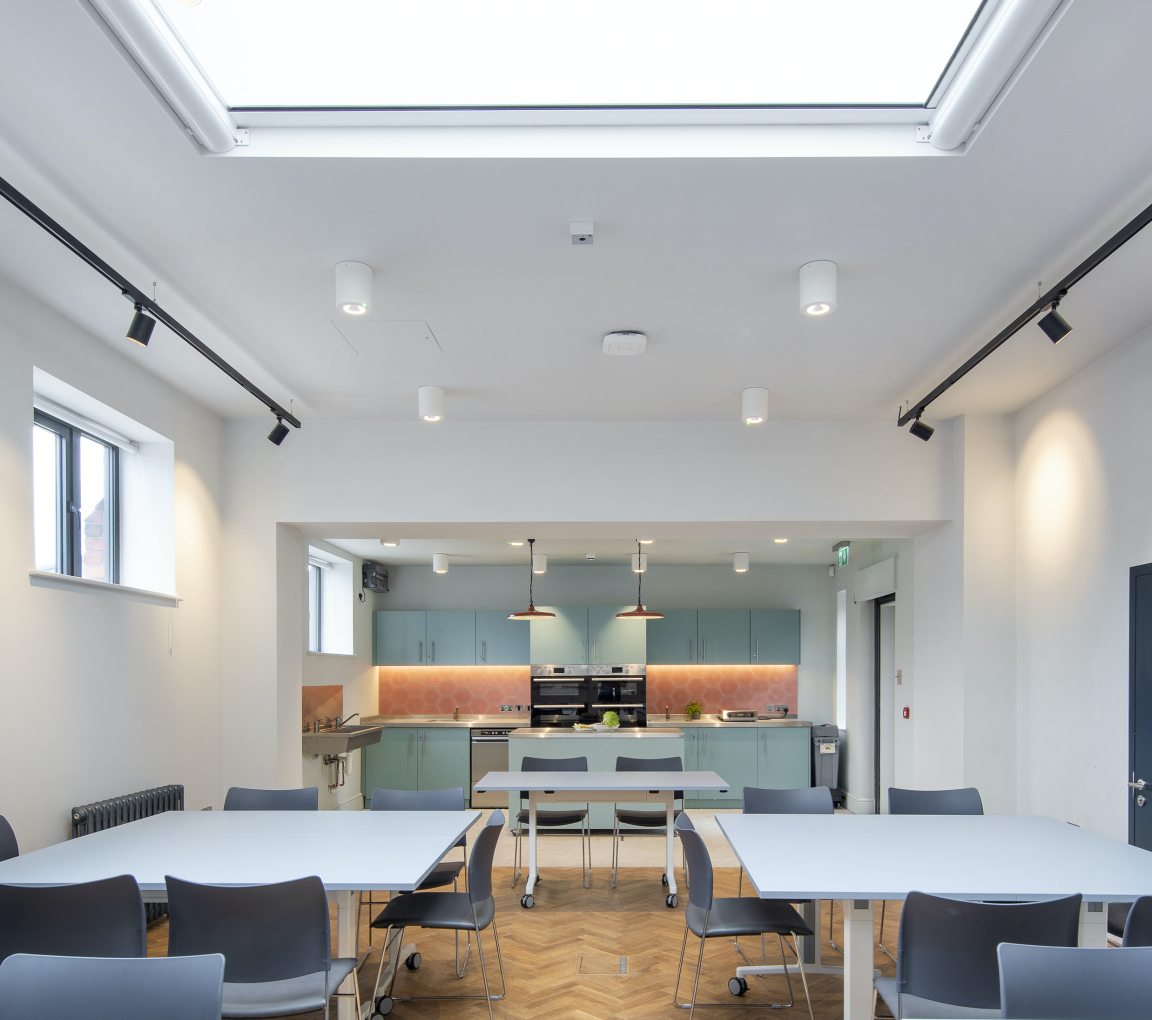
Joel Chester Fildes
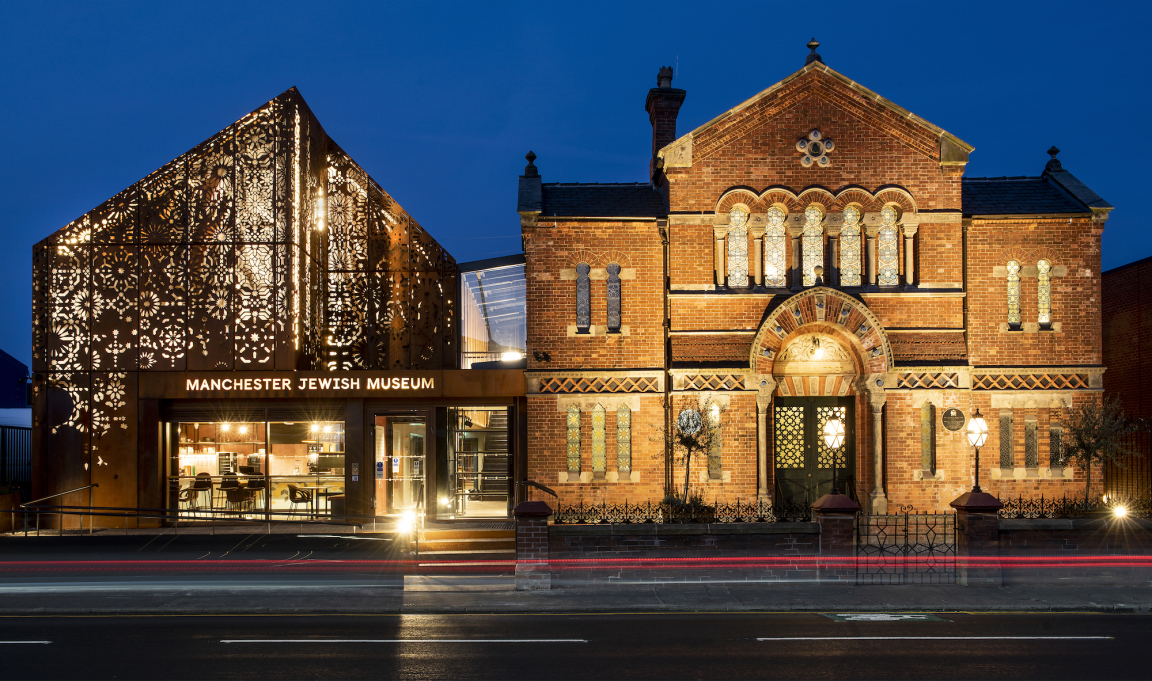
Joel Chester Fildes
Katy Marks from Citizens Design Bureau comments: “We wanted to create a building that would spark conversations, unexpected connections and surprising insights. For example, the facade patterns are an exploration of eight point geometry, drawn from extensive research of the Owen Jones archives at the V&A and inspired by the history of the community that built the synagogue in 1874: Sephardi Jews from Spain, Portugal and North Africa. Their geographic origins inspired the architect Edward Salomons, who incorporated Moorish (Islamic) geometric architectural motifs from that region into the synagogue building. This project was therefore an important opportunity for us on behalf of the museum to embark on conversations across religious and cultural difference. Now more than ever, it serves as an architectural expression of the idea that we have more in common than that which divides us and we’re excited to finally share the building with everyone.”



